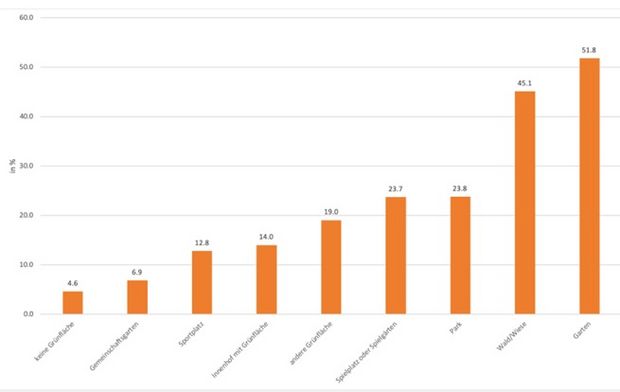Closing playgrounds and sports fields has meant that in many residential environments, 10% of children and young people have had no access to any green spaces.

While the availability of green spaces throughout Austria is relatively good overall, even in cities, only 4.6% of those surveyed for the Corona Panel study stated they have no access to green spaces in their residential environment. Closing playgrounds and sports fields has meant that one in ten children and one in ten youths do not have access to any green spaces where they live.
Prof. Johann Bacher (head of the Institute for Sociology at the JKU) remarked: "Up until the restrictions were loosened on May 1, the residential area served as the place of refuge to live, rest, move around in, or see someone you know. This was enormously important, especially for young people."
By closing certain green spaces beginning March 16, 2020 - such as playgrounds (not explicitly mentioned in the ordinance, but by decision at the state or municipal level) and sports fields (by ordinance) - during the restrictive measures to prevent the spread of the Coronavirus ("corona entry bans"), the proportion of those with only one green space at most increases to 31.8%. If all parks had closed, 37.5% would have maximum one green space in their residential environment. The proportion of those without green spaces in their residential area would then have roughly tripled to 14.1%.
Bacher's recommendation: If there is a new wave of Coronavirus infections, communities should try and avoid closing green spaces because they serve a multifunctional purpose. The community should try regulated the use of these areas. This information comes from the Austrian Corona Panel Project.








